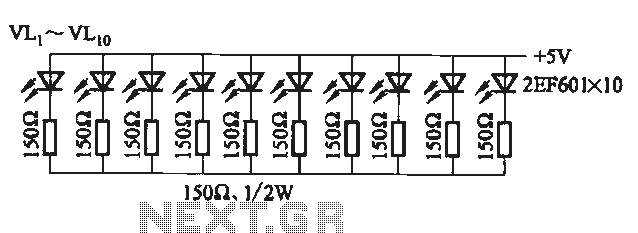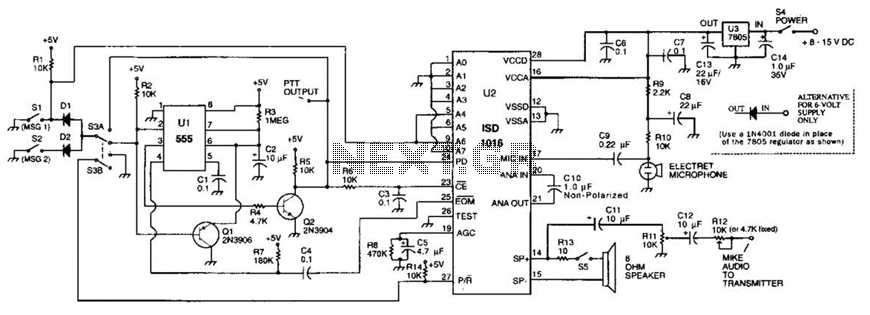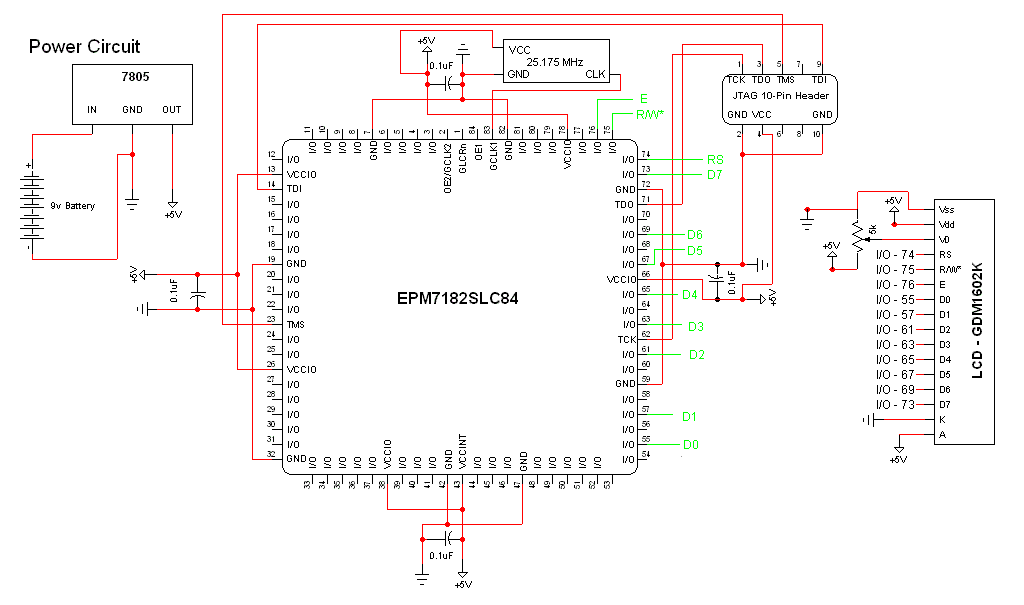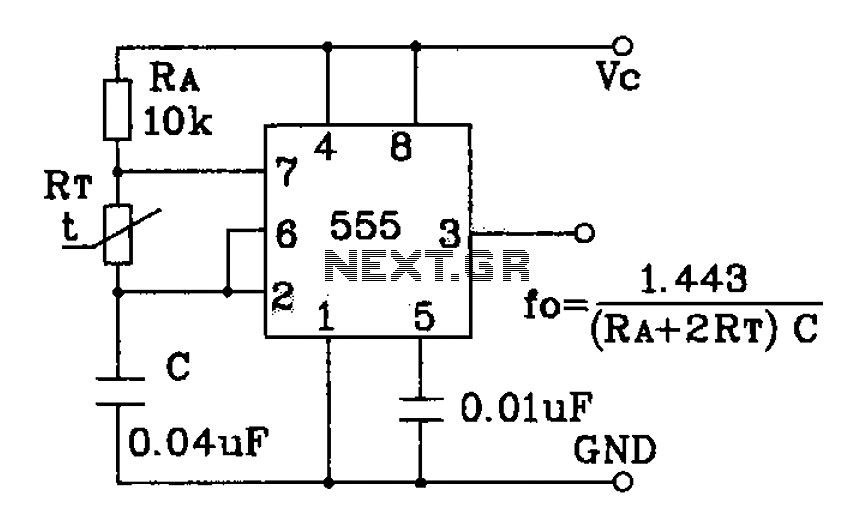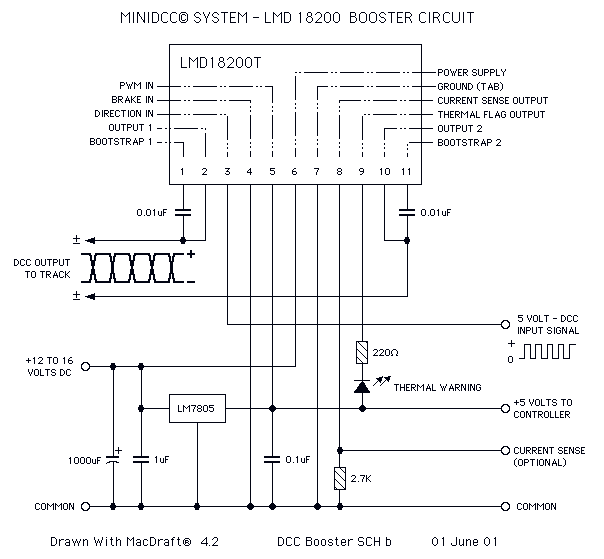
Field circuit diagram of the needle
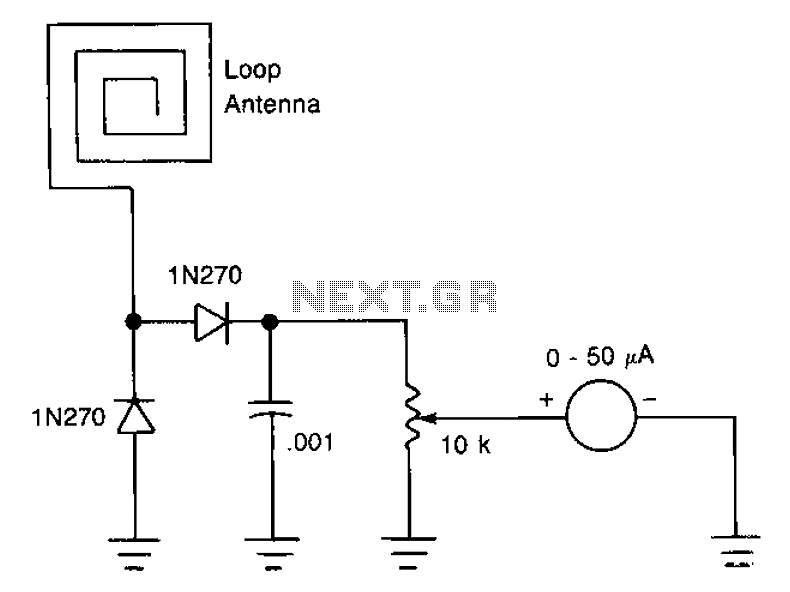
The antenna consists of approximately 20 cm of insulation made from strands, which are glued together inside a small plastic box. An RF current is processed through two diode rectifiers, and a 10k potentiometer is connected to the pin field. Additionally, it functions as a variable attenuator.
The described antenna design incorporates a compact configuration that facilitates RF signal reception and processing. The 20 cm insulated strands serve as the primary radiating element, effectively capturing radio frequency signals. The use of strands allows for flexibility in the antenna's design, which can be advantageous in various applications where space is limited.
The small plastic enclosure not only protects the antenna elements from environmental factors but also aids in maintaining the structural integrity of the assembly. The integration of two diode rectifiers is crucial for converting the received RF signals into a usable direct current (DC) output. This rectification process is essential for applications that require the conversion of RF energy into a form that can be utilized for further processing or measurement.
The inclusion of a 10k potentiometer allows for the adjustment of the signal level, effectively functioning as a variable attenuator. By modifying the resistance, users can control the amplitude of the signal being processed. This feature is particularly useful in applications where signal strength may vary, enabling optimal performance and preventing signal overload.
Overall, this antenna design presents a versatile solution for RF signal reception, with its compact form factor, protective housing, and adjustable signal processing capabilities. Such characteristics make it suitable for a wide range of electronic applications, from basic RF experiments to more complex communication systems.Antenna is about 20cm of insulation made of strands, these strands glued around inside a small plastic box. RF current by two diode rectifier, a 10k potentiometer to pin field provides a variable attenuator.
The described antenna design incorporates a compact configuration that facilitates RF signal reception and processing. The 20 cm insulated strands serve as the primary radiating element, effectively capturing radio frequency signals. The use of strands allows for flexibility in the antenna's design, which can be advantageous in various applications where space is limited.
The small plastic enclosure not only protects the antenna elements from environmental factors but also aids in maintaining the structural integrity of the assembly. The integration of two diode rectifiers is crucial for converting the received RF signals into a usable direct current (DC) output. This rectification process is essential for applications that require the conversion of RF energy into a form that can be utilized for further processing or measurement.
The inclusion of a 10k potentiometer allows for the adjustment of the signal level, effectively functioning as a variable attenuator. By modifying the resistance, users can control the amplitude of the signal being processed. This feature is particularly useful in applications where signal strength may vary, enabling optimal performance and preventing signal overload.
Overall, this antenna design presents a versatile solution for RF signal reception, with its compact form factor, protective housing, and adjustable signal processing capabilities. Such characteristics make it suitable for a wide range of electronic applications, from basic RF experiments to more complex communication systems.Antenna is about 20cm of insulation made of strands, these strands glued around inside a small plastic box. RF current by two diode rectifier, a 10k potentiometer to pin field provides a variable attenuator.
Warning: include(partials/cookie-banner.php): Failed to open stream: Permission denied in /var/www/html/nextgr/view-circuit.php on line 713
Warning: include(): Failed opening 'partials/cookie-banner.php' for inclusion (include_path='.:/usr/share/php') in /var/www/html/nextgr/view-circuit.php on line 713
